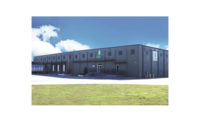Whether its craft beer, imported bottled water, cold-pressed juices or any of the other premium beverages gaining traction, market analysts have highlighted that consumers are willing to pay a premium price if they feel they are getting value-added benefits from a product. When looking at the beverage distribution chain, similar trends are emerging as operations leadership is investing in technology to help streamline delivery strategies.
John Rosenberger, manager of iWAREHOUSE Gateway and global telematics for Greene, N.Y.-based The Raymond Corp., notes that the market for telematics and logistics support has experienced proliferation within the past year, and he credits that growth to three notable trends.
“The first is customer acceptance and adoption as the value of telematics data becomes more widely recognized,” he says. “Today’s telematics systems can offer quicker returns on investment than previous generations of data collection systems. With the proliferation of affordable telematics consulting and professional service programs, beverage providers gain assistance in achieving their targeted [return on investment] (ROI) and process change recommendations based on expanding telematics data sets.”
Expanding on this, Rosenberger highlights how the technology has become more affordable. “Telematics within the beverage industry can leverage widely used consumer and other industry technologies, providing better solutions at a lower cost,” he says. “For example, the same cellular communication modules used in mobile phones can be found in contemporary telematics devices. As mobile and other technologies — like nearfield and ultra-wide band — advance, so does telematics.”
The valuable assistance that warehouses can gain from employing telematics technology is the final trend that Rosenberger sees as contributing to its increased usage. “The ability of telematics systems to aid in warehouse product velocity and accuracy is the third driver,” he says. “As consumers demand products quicker and without error, telematics data and professional services can be used to increase warehouse efficiency.”
William Salter, chief executive officer and president of Dallas-based Paragon Software Systems, adds that SKU proliferation has contributed to a growing need for telematics technology within beverage distribution.
“We have seen growing demand for integration between routing and scheduling systems and telematics systems from across the beverages market,” he says. “This is being driven by consumer demand for a wider choice of beverages and the increasing expectations of the bar, restaurant and hotel managers who expect tighter delivery windows and a higher level of customer service from their drinks delivery provider.”
Salter elaborates on how SKU proliferation has made delivery operations more complex.
“The U.S. market has seen a growth in the choice of drinks available to consumers, such as craft beer, flavored water and fresh juices, along with a growth of independent/niche drinks companies, such as small-batch gin makers and local ciders,” he says. “Diversification of consumer choice means hotels, bars, restaurants and supermarkets need to stock a wider range of choices. But with limited storage space at many of these venues, deliveries have to consist of smaller volumes leading to more frequent, smaller deliveries.
“As a result, the drinks delivery operation is more complex and requires more precise route planning,” Salter continues. “Many distributors are feeling the pressure to offer ‘just-in-time’ delivery services for later cut-off ordering times. Beverage distributors need to balance the service they are offering with their transport costs.”
He adds that as consumers expect more from retailers and foodservice outlets, distributors are turning to telematics to fulfill these expectations.
“When consumers visit an establishment, they expect to be able to choose from a large variety of beverages, which means outlets must have smaller but more regular deliveries of products to keep up with demand,” Salter says. “Beverage distributors are feeling the pressure to improve customer service levels to keep hotels, bars and restaurants supplied with a wide range of beverages. We have seen increasing demand from existing and new customers for routing and scheduling systems to help them differentiate their distribution operations by offering better customer service while keeping costs low by both minimizing mileage and maximizing use of vehicles and drivers.”
He adds that Paragon has seen an increase in the use of its telematics devices that also include routing and scheduling software. These programs can allow for real-time updates on delivery orders.
“Beverage distributors that integrate telematics data with routing and scheduling can compare the actual drive versus the transportation plan,” he says. “If the driver deviates from the plan, they can find out what happened. Telematics systems allow the planner to see in real-time, the actual against plan, making sure that the plan they have created is being followed and the fuel savings realized.”
Armed with intelligence
When working with telematics technology, warehouse and delivery operations are experiencing numerous benefits to help day-to-day and long-term decision-making, suppliers note.
“Telematics offers necessary integration with manually operated material-handling equipment as well as automated vehicles, such as the Raymond Courier 3020 tow tractor automated lift truck with Seegrid Vision technology,” Raymond Corp.’s Rosenberger says. “It gives customers even greater visibility into these automated and manual mixed fleets. Time in automated mode (man-off) versus manual mode (man-on) can be measured and reported through telematics to ensure optimal usage of each type of vehicle.
“Telematics can also report on vehicle performance in high-density storage applications,” he continues. “Innovations such as Raymond’s Radioshuttle are used to accommodate high-density racking, allowing operators to remove products from the ends of aisles without needing drive-thru racking. This allows warehouse tasks to be paralleled — while a lift truck operator is transporting a pallet to the loading dock, Radioshuttle is already retrieving the next from within the inner slots of the rack. Such solutions incorporate telematics by nature and use the technology to its fullest extent to quickly see return on investment.”
Paragon’s Salter also notes the benefits that its partners have realized since implementing the company’s technology.
“Our drinks distribution customers have implemented Paragon routing and scheduling systems to reduce fuel costs, increase utilization of their vehicles and drivers, and improve customer service levels,” he says. “When our customers integrate telematics systems with Paragon routing and scheduling, they are able to achieve further savings because they can compare the actual journey the driver takes and the completed schedule for the day with the planned route. Planners can discuss deviations from the plan during the driver debrief or behavior such as harsh braking and idling and ask the driver to correct their behavior so that the planned route can be followed more closely.”
Salter notes that the software allows customers to compare between planned and actual delivery to help assist in future delivery decisions as well. “Distributors can also use the data collected from telematics equipment to carry out strategic reviews and feed continuous improvement into the transport plan,” he says. “For example, if delays continuously occur at a specific customer site, they can identify the root cause of the delays and then solve the problem by changing the time of delivery, or just allocating a longer time window for that customer site.”
The program also allows companies to collect data via electronic logging devices to ensure drivers’ hours are within the limitation of regulations, Salter adds.
These capabilities are examples of how technological advancements have helped further the use of telematics programs. “Telematics systems now collect a wider range of data, including engine behavior, driver behavior and Hours of Service data,” Salter says. “The ability to collect all of this data has significantly improved the visibility across delivery operations in real-time. The ability to use this data in real-time has improved the visibility a beverage distributor is able to provide to its customers, or a delivery operation is able to provide to its own stores. For example, an onboard telematics system can detect that a delivery driver is running late and provides an automatic update to an online arrivals board for store managers.”
To support these delivery needs, Paragon offers its software module Paragon Route Execution.
“Paragon Route Execution helps further improve routing and scheduling planning accuracy and real-time responsiveness by using live data from vehicle-tracking technology systems,” he explains. “Any problems — such as traffic delays, missed deliveries or impending late arrivals — can be dealt with quickly, where and when they occur. Transportation planners or customer service teams can then alert customers if a delivery is going to be late or early, allowing the store or restaurant manager to ensure staff are on hand to help with unloading when the truck arrives.”
Raymond Corp.’s Rosenberger also notes how technological advancements have helped with the spread of telematics implementation. Among those examples is the company’s iWAREHOUSE program.
“iWAREHOUSE is a telematics system that provides fleet management and warehouse optimization solutions,” he says. “With iWAREHOUSE, managers can collect and report on operational and maintenance data for their industrial vehicle fleets and operators, as well as ensure adherence to proper operator protocols and customizable parameters.
“iWAREHOUSE Evolution is the newest product offering to be added to Raymond’s fleet management and telematics system,” Rosenberger continues. “It helps growing businesses transition from basic fleet management features to enterprise-level functions of a telematics system. These functions are all provided on a color touchscreen that provides an intuitive and user-friendly display for operators. iWAREHOUSE Evolution telematics solution works on all equipment, regardless of make and model.”
As automation continues to proliferate throughout warehouse and delivery operations, Rosenberger expects technology platforms like telematics to continue growing.
“In food and beverage industries, materials are tracked within the warehouse at all times, but this tracking often stops once the over-the-road truck arrives at its destination,” he says. “We will start to see many more suppliers implement telematics on lift trucks inside over-the-road trucks to monitor how long it takes to move materials into the final outlet. This will allow for increased data aggregation from the warehouse, over-the-road truck and retail outlet for fully comprehensive monitoring throughout the supply chain.” BI





